
Pool of Radiance is a role-playing video game developed and published by Strategic Simulations, Inc (SSI) in 1988. It was the first adaptation of TSR's Advanced Dungeons & Dragons (AD&D) fantasy role-playing game for home computers, becoming the first episode in a four-part series of D&D computer adventure games. The other games in the "Gold Box" series used the game engine pioneered in Pool of Radiance, as did later D&D titles such as the Neverwinter Nights online game. Pool of Radiance takes place in the Forgotten Realms fantasy setting, with the action centered in and around the port city of Phlan.

Curse of the Azure Bonds is a role-playing video game developed and published by Strategic Simulations in 1989. It is the second in a four-part series of Forgotten Realms Advanced Dungeons & Dragons Gold Box games, continuing the events of Pool of Radiance.

King's Bounty is a turn-based fantasy video game designed by Jon Van Caneghem and published by New World Computing in 1990. The game follows the player's character, a hero of King Maximus, appointed with the job of retrieving the Sceptre of Order from the forces of chaos, led by Arech Dragonbreath. King's Bounty is notably considered the forerunner of the Heroes of Might and Magic series of games.

Pools of Darkness is a role-playing video game published by Strategic Simulations in 1991. It is the fourth entry in the Pool of Radiance series of Gold Box games, and the story is a continuation of the events of the third game, Secret of the Silver Blades. Like the previous games in the series, it is set in the Forgotten Realms, a campaign setting from Dungeons & Dragons. Players must stop an invasion from an evil god, eventually traveling to other dimensions to confront his lieutenants.
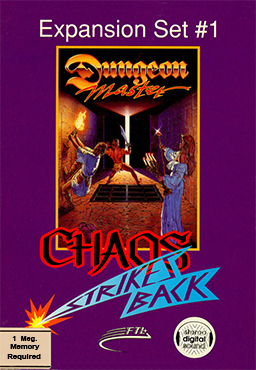
Chaos Strikes Back is an expansion and sequel to Dungeon Master, the earlier 3D role-playing video game. Chaos Strikes Back was released in 1989 and is also available on several platforms. It uses the same engine as Dungeon Master, with new graphics and a new, far more challenging, dungeon.

Might and Magic Book One: Secret of the Inner Sanctum is an early role-playing video game, first in the popular and influential Might and Magic franchise. It was released in 1986 as New World Computing's debut, ported to numerous platforms and re-released continuously through the early 1990s.

The Bard's Tale II: The Destiny Knight is a fantasy role-playing video game created by Interplay Productions in 1986. It is the first sequel to The Bard's Tale, and the last game of the series that was designed and programmed by Michael Cranford.
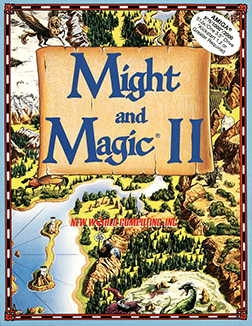
Might and Magic II: Gates to Another World is a role-playing video game developed and published by New World Computing in 1988. It is the sequel to Might and Magic Book One: The Secret of the Inner Sanctum.

Dragon Wars is a fantasy role-playing video game developed by Rebecca Heineman, published by Interplay Productions in 1989, and distributed by Activision.
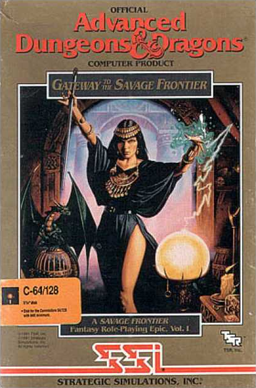
Gateway to the Savage Frontier (1991) is a Gold BoxDungeons & Dragons computer game developed by Beyond Software and published by SSI for the Commodore 64, PC and Amiga personal computers.
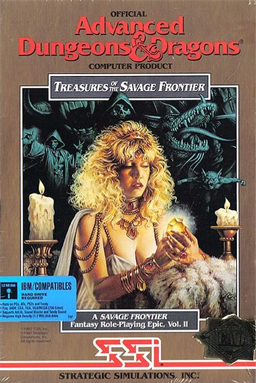
Treasures of the Savage Frontier (1992) is a Gold Box Dungeons & Dragons role-playing video game. It was developed by Beyond Software and published by SSI for the Amiga and DOS.
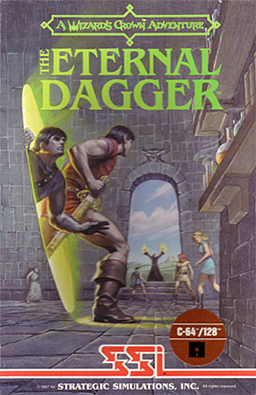
The Eternal Dagger is a top-down role-playing video game published by Strategic Simulations in 1987. It is a sequel to Wizard's Crown from 1986. Demons from another dimension are invading the world, and the only item that can seal the portal is the titular dagger. Players can transfer their characters over from Wizard's Crown, minus whatever magical items they had on them.

The Immortal is an isometric action-adventure game originally created by Will Harvey and released by Electronic Arts in 1990 for the Apple IIGS. It was soon ported to the Amiga, Atari ST, DOS, Nintendo Entertainment System, and Genesis. A wizard is attempting to find his mentor in a large and dangerous labyrinth. It has a high degree of graphic violence. In 2020, the NES port was re-released on the Nintendo Switch Online service, while the Genesis port was re-released on the Piko Collection Collection 1 cartridge for the Evercade.

Champions of Krynn is role-playing video game, the first in a three-part series of Dragonlance Advanced Dungeons & DragonsGold Box games. It was published in 1990 by Strategic Simulations. The highest graphics setting supported in the MS-DOS version is EGA graphics. It also supports the Adlib sound card and either a mouse or joystick.

The lich is an undead creature found in the Dungeons & Dragons (D&D) fantasy role-playing game. Liches are spellcasters who seek to defy death by magical means.
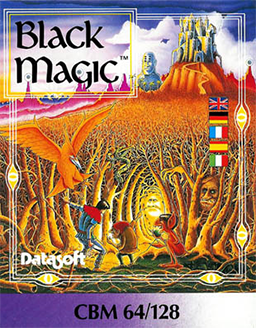
Black Magic is a multidirectional scrolling action-adventure game written for the Apple II by Peter Ward of Action Software and published by Datasoft in 1987. Commodore 64, ZX Spectrum, and Amstrad CPC versions were also released.

Elvira II: The Jaws of Cerberus is the second game in the Elvira series of horror adventure/role-playing video games. It was developed by Horror Soft and published by Accolade in 1992. The game is a sequel to 1990's Elvira: Mistress of the Dark. It was followed by Waxworks, which can be considered its spiritual sequel.

Tangled Tales: The Misadventures of a Wizard's Apprentice is a computer game developed by Origin Systems in 1989 for the Apple II, MS-DOS, and Commodore 64.

Prophecy of the Shadow is a 1992 fantasy role-playing video game developed by Strategic Simulations for MS-DOS. The game was released in both English and German versions.
Pool of Radiance is a series of role-playing video games set in the Forgotten Realms campaign settings of Dungeons & Dragons; it was the first Dungeons & Dragons video game series to be based on the Advanced Dungeons & Dragons rules.


















